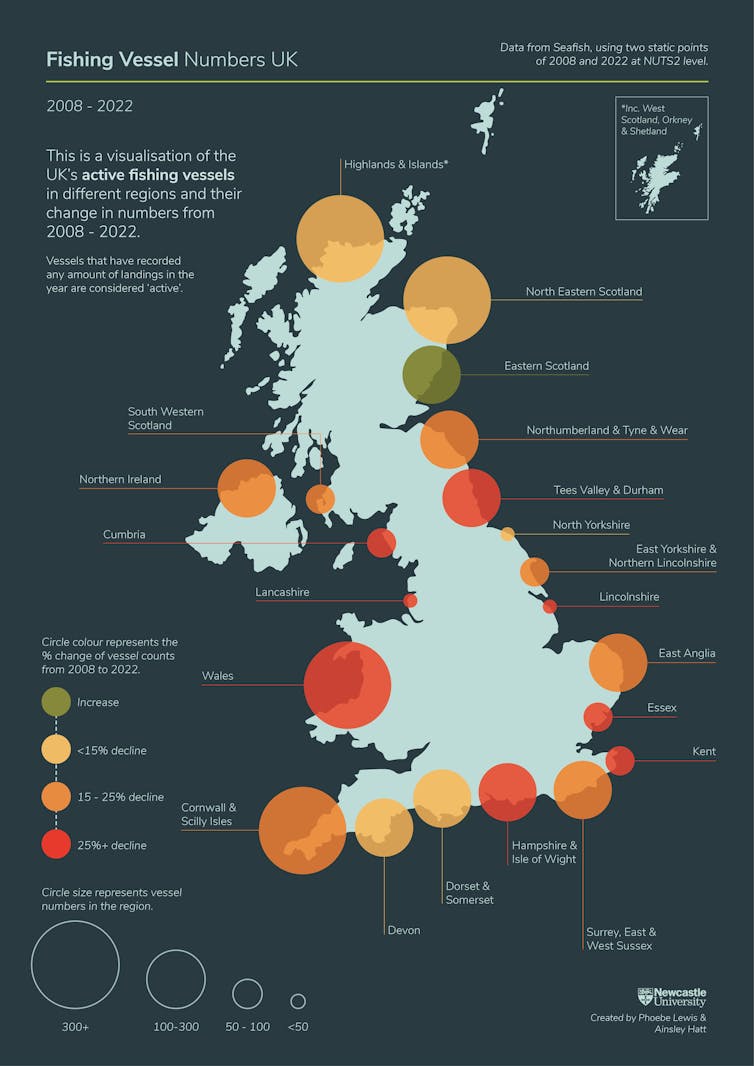Source: The Conversation – UK – By Amelia Hadfield, Founding Director, Centre for Britain and Europe, Department of Politics and International Relations, University of Surrey
Sovereign states are not only responsible for tackling fossil fuel damage, they have to make redress, according to a recent ground-breaking ruling by the International Court of Justice (ICJ). The ruling makes clear that the court believes states must actively prevent harm to the world’s climate system. States that fail to act accordingly may have to pay compensation, restore damaged ecosystems, rebuild infrastructure or face further legal challenges.
The ruling came in the form of an advisory opinion, which is a legal interpretation provided by a high-level court or tribunal with a special mandate, in response to a specific question of law. Simply put, an advisory opinion is not legally binding in the way a court judgment between two nations would be.
However, as an expert in international relations, I believe the consequences of this ruling are significant, both legally and politically.
Politically, states are now in the firing line as the main agents of harm. States and the public and private sector energy companies that states contract, licence or subsidise are now more visible in terms of the kind of climate harm they permit.
As stated by the ICJ president, Yūji Iwasawa, the advisory opinion emphasises the “urgent existential threat” affecting nature and people, alongside the disproportionately intense effect upon vulnerable countries, including small island states, that brought the claim on the basis of years of campaigning.
For climate campaigners the ruling that “states do have legal obligations to act on climate change” is a definitive win. It’s also only the first step in a much larger challenge to prompt real change around fossil fuel usage and damage.
Read more:
Three secrets to successful climate litigation
The possibility of big emitters being successfully sued is certainly the most tangible takeaway from the ruling.
But from an international relations standpoint, the question is the degree to which the ruling works with similar judgments to shift international behaviour overall. States can choose to make immediate changes in upcoming climate negotiations, but also within the fabric of global environmental governance overall.
Legally, the ruling itself is potentially seismic. First, for those regarding international rules on climate change as unimportant in law, the ICJ’s advisory opinion will be a wake-up call. This ruling may be advisory but it indicates the rules on climate change are legal, enforceable and substantive in the eyes of the court.
Second, states failing to abide by international rules on climate change can now be held to account. For national governments, this means that countries should no longer treat climate change rules as aspirational or discretionary. Instead, the ruling pushes each state to treat the 1.5°C target for limiting global warming as fixed, however challenging.
While advisory opinions are not legally binding, they represent a unanimous opinion on the key issues from the ICJ, and effectively gather together all previous rulings and law. In doing so, such rulings arguably drive forward climate change law – and litigation – now a growth industry in its own right.
Even for states that are not signatories to various climate treaties or party to various international courts, the ICJ ruling makes for tough reading. States do have legal obligations to act on climate change, regardless of the treaties that have been signed.
The ICJ’s ruling is vital in this respect, because it outlines how countries that are not part of climate change treaties still have to show that their climate policies and practices are consistent with other parts of international law.
In doing so, the ICJ makes clear that a whole range of treaties now applies to states (from the UN convention on the law of the sea to the Vienna convention for the protection of the ozone layer) and that principles such as intergenerational equity must be upheld.
The political implications for states arising from this advisory opinion are twofold: states can be sued as fossil fuel emitters, and countries can sue harm-inducing emitters for failure to comply.
A turning point
I argue the ICJ ruling represents a turning point. It illustrates a growing difference between international judicial attitudes to climate change, and the attitudes of individual states.
The ruling also aligns with similar judgments emerging from other international courts, including the International Tribunal for the Law of the Sea and the Inter-American Court of Human Rights. They show a consistent approach and clarity on the question.
Last year, the European Court of Human Rights declared that Switzerland had “failed to comply with its duties” and violated the right to respect for private and family life by failing to combat climate change.
Some state governments remain largely defiant. The US has withdrawn from the Paris agreement and global plastics treaty negotiations. Brazil is progressing a devastation bill that allows projects classified as having “medium” polluting potential to obtain an environmental licence through a self-declared online form and could lead to lead to vast deforestation.
The ICJ ruling pushes states to sensibly redesign their systems of energy, trade and investment with justice and equity at the forefront, helping move towards a just transition to greener energy. The opinion opens legal space for vulnerable nations and displaced communities to seek remedy and restitution.
It could also affect international laws on everything from human rights and ocean health to the ozone layer and desertification. And have a knock-on effect on treaties currently under negotiation such as the global plastics treaty.
Can the ICJ ruling become a practical framework for accountability, and truly support UN Secretary General António Guterres’ vision of “energy security and people’s security”? The jury on that is still out.
Don’t have time to read about climate change as much as you’d like?
Get a weekly roundup in your inbox instead. Every Wednesday, The Conversation’s environment editor writes Imagine, a short email that goes a little deeper into just one climate issue. Join the 45,000+ readers who’ve subscribed so far.
![]()
Amelia Hadfield is working with environmental law researchers Rosalind Malcolm and Feja Lesniewska to explore both the political and legal implications of the ICJ’s recent ruling on state behaviour at national and global levels.
– ref. A new global ruling shows states are legally responsible for tackling climate change – https://theconversation.com/a-new-global-ruling-shows-states-are-legally-responsible-for-tackling-climate-change-261896












